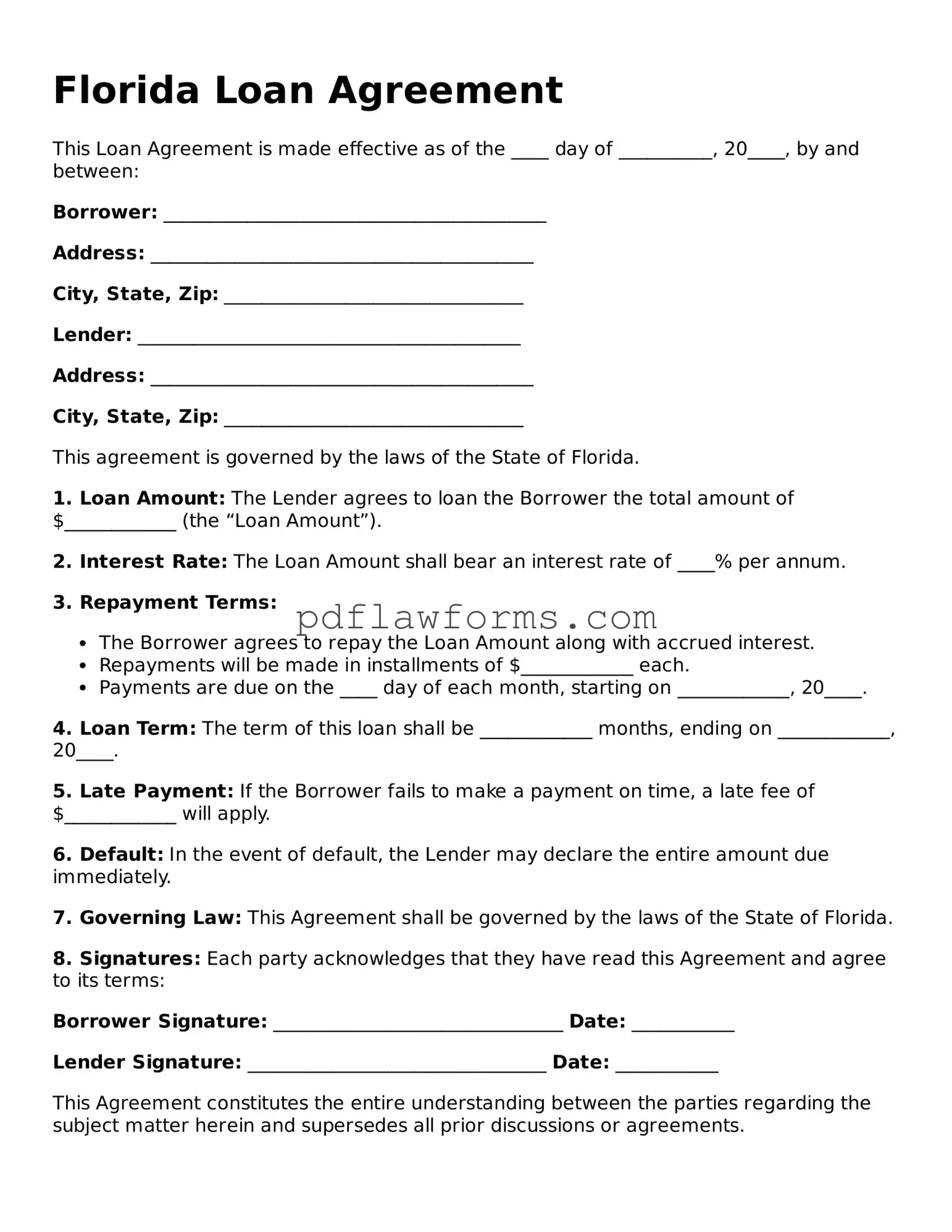Filling out the Florida Loan Agreement form can be a straightforward process, but mistakes often occur. One common error is failing to provide accurate personal information. When individuals do not double-check their names, addresses, or Social Security numbers, it can lead to complications later on. Ensuring that all personal details are correct is essential for the validity of the agreement.
Another frequent mistake is neglecting to specify the loan amount clearly. If the amount is ambiguous or incorrectly stated, it can create confusion and disputes between the lender and borrower. It is crucial to write the loan amount in both numerical and written form to avoid any misunderstandings.
People sometimes overlook the importance of detailing the repayment terms. This includes the interest rate, payment schedule, and any penalties for late payments. A lack of clarity in these areas can lead to disagreements down the line. Clearly outlining these terms helps protect both parties and sets clear expectations.
Additionally, individuals may fail to sign the document properly. Signatures are vital for the agreement's enforceability. If a signature is missing or not dated, it can render the agreement void. Always ensure that all required parties sign and date the form correctly.
Another mistake involves not including any necessary disclosures. Florida law requires certain disclosures to be made in loan agreements. Failing to include these can result in legal issues. It is important to be aware of what disclosures are required and to include them in the agreement.
Some borrowers also make the mistake of not reading the entire agreement before signing. This can lead to misunderstandings about the terms and conditions. Taking the time to review the document thoroughly can prevent future problems and ensure that all parties are on the same page.
Lastly, individuals may not keep a copy of the signed agreement. Having a copy is essential for personal records and can be important if any disputes arise. Always make sure to retain a signed copy for future reference.
